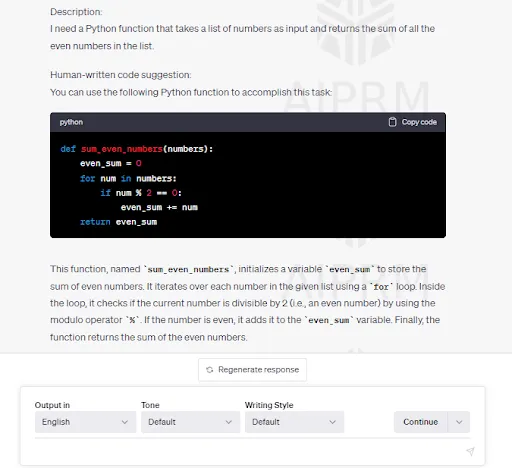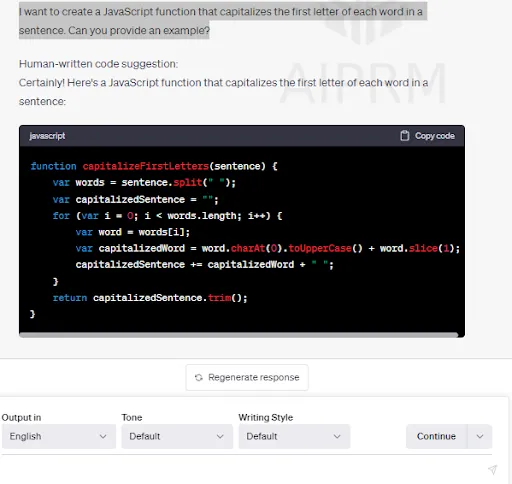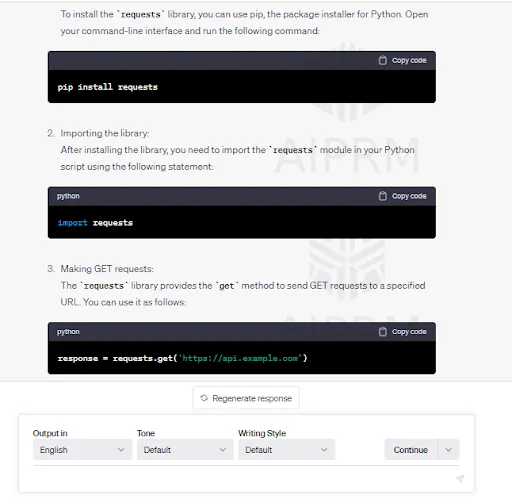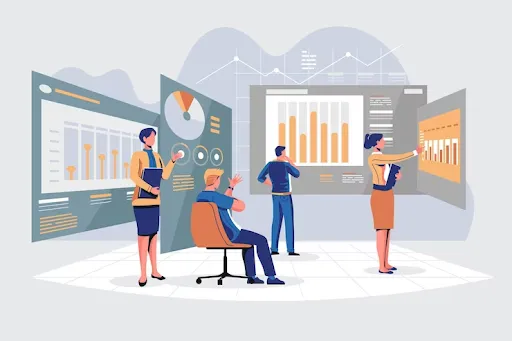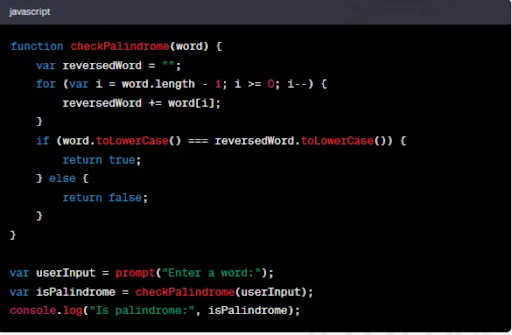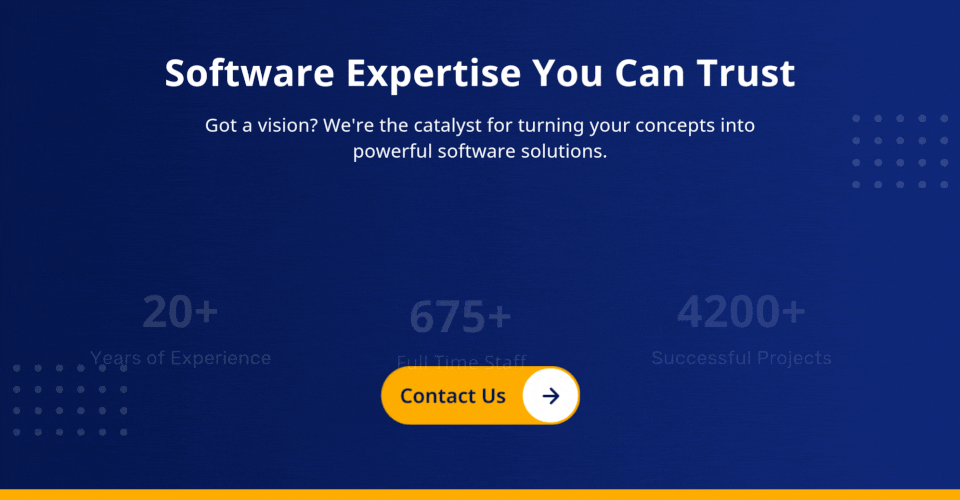“Artificial intelligence is not a substitute for human intelligence; it’s a tool for extending it.”
-Brynjolfsson and McAfee
The launch of OpenAI’s popular AI chatbot ‘ChatGPT’ has created a stir across various industries. The platform’s incredible features have caught the attention of millennials and entrepreneurs who see its potential to transform their work. The IT industry is no exception, as it is experiencing a revolution in software and web development with the help of this innovative platform.
This blog post will delve into the top 10 use cases for ChatGPT in software development and how it can enhance & streamline the development process.
A Brief Overview
ChatGPT is an artificial intelligence-based language model created by the OpenAI project. It has been trained with vast data that emulates how humans speak in the English language and is trained on the GPT-3 architecture.
ChatGPT can process the input text and generate coherent output that can be used in various applications. It is an AI-powered chatbot platform with answers to almost all your questions.
The platform can understand the conversation’s context, leading to quick and relevant responses.
Some of the critical capabilities of the AI platforms are:
Content generation: With the help of ChatGPT, you can generate rich, high-quality, contextually appropriate content for multiple uses like marketing copy, news articles, and social media posts.
Conversational AI: ChatGPT can be leveraged to develop chatbots & virtual assistants that can interact with the users intuitively, providing support & assistance across different industries.
Sentiment analysis: The famous AI platform is smart enough to analyze text & determine the sentiment behind it, enabling businesses to monitor customer feedback & respond accordingly.
Language translation: ChatGPT can translate text from one language to another, making it a valuable tool for overseas businesses.
Knowledge management: The platform can store and retrieve knowledge, which makes it a helpful tool for customer service teams and other knowledge-intensive industries.
Creative writing: This advanced technology can write creative content like poetry, short stories, and many more, making it a significant tool for content creators and writers.
Personalization: ChatGPT can be trained on specific datasets to generate tailored responses to individual users. This makes it one of the most powerful marketing and customer service tools.
Overall, the capabilities of ChatGPT are vast, and it has the potential to transform how we interact with technology in the future.
Streamline your software development process with AI-driven insights.
10 ChatGPT Use Cases in Software Development
ChatGPT can simplify your work by reducing time, whether you are a developer or project manager. Here we have listed its 10 used cases in software development that you can leverage for your business.
Use Case #1: Code Optimization
Chat GPT is an ideal solution for software developers seeking code optimization. They can utilize natural language processing (NLP) and ML technologies to quickly analyze and identify code areas that need improvement.
This unique AI platform has been designed to aid in code optimization by providing an easy-to-understand user interface for developers to identify functional specifications, non-functional requirements, use cases, software architecture, design patterns, implementation, and testing.
You can use Chat GPT’s AI-driven recommendations to easily create & test different code versions until it meets your desired performance levels. By doing this, you can save time, money, and energy by creating optimized code in fewer iterations than without the assistance of ChatGPT.
The platform would also provide you with suggestions & guidance for code optimization. You can also access a comprehensive suite of tools to streamline the software development process and improve code.
Use Case #2: Bug fixing
Bugs are the biggest obstacle to software development, and developers often find it challenging as it takes a lot of time. Identifying bugs accurately & quickly is difficult in software development, but ChatGPT enables the power of speed by providing instant solutions to problems. By using ChatGPT, software developers can quickly and efficiently identify and fix bugs in their code.
Developers can analyze code for potential bugs before they even show up using artificial intelligence (AI) algorithms, enabling them to take proactive measures to fix any issues and avoid further ones.
They won’t have to worry about juggling multiple programs or applications with this level of integration because they can continue to concentrate on their primary tasks.
As a result, developers may find ChatGPT to be a valuable tool for bug-fixing tasks. Its user-friendly interface, NLP, and AI algorithms can aid developers in finding and resolving bugs before they become more severe.
Also Read: Latest Chatbot Trends 2024 to Take your User Experience to a Whole New Level
Use Case # 3: Code Generation
ChatGPT can assist with code generation by providing suggestions, examples, and code snippets for specific programming tasks or problems.
It can understand natural language descriptions of desired functionality and generate corresponding code solutions.
Developers can describe their requirements or ask for specific code patterns, and ChatGPT can generate code templates or provide sample implementations to assist in the development process.
For instance, we asked ChatGPT for a Python function that inputs a list of numbers and returns the sum of all the even numbers in the list.
ChatGPT answer:
Example 2
Command: I want to create a JavaScript function that capitalizes the first letter of each word in a sentence. Can you provide an example?
ChatGPT answer:
As you can see, the AI tool not only provides the right answer but infuses it with a human touch as well.
Use Case #4: Testing
ChatGPT can be used for testing custom software development services. With ChatGPT, developers can quickly create tests that validate the functionality and performance of custom software development services. This testing type helps identify issues early in development before they become more significant problems requiring additional resources.
ChatGPT enables developers to create custom tests based on specific use cases. These tests determine how well a service performs under different conditions, such as peak usage periods or when specific features are used. ChatGPT provides detailed reporting capabilities so developers can monitor test results and take appropriate corrective action.
ChatGPT for software development also offers powerful debugging tools. With these tools, developers can easily pinpoint issues with the code and make adjustments accordingly. This helps to reduce development time, improve quality and reliability, and optimize the overall user experience.
Use case #5: Documentation
Documentation is an essential part of any software development project. Creating comprehensive, up-to-date, and accurate documentation is a time-consuming task that requires a lot of effort and expertise. With ChatGPT, developers can quickly and accurately create documentation, saving valuable time and resources.
ChatGPT’s advanced artificial intelligence technology understands user requirements and creates accurate documentation with minimal input, eliminating the need to hire dedicated developers. This saves time, money, and resources for other development tasks.
ChatGPT also enables faster development cycles as it provides developers with a reliable source of accurate documentation, increasing development projects’ speed and accuracy. Developers can easily access the data and information needed for their projects without searching through multiple documents and files.
Using ChatGPT for software development, businesses can reduce costs and increase efficiency. The AI-based solution can provide the accuracy and flexibility necessary to create high-quality documents without hiring additional developers. This will allow businesses to focus their resources on more complex development tasks and deliver products faster.
Example: We asked ChatGPT for documentation for the requests library in Python.
Here is the answer.
We got a detailed answer where the AI tool shared a step-by-step process of ‘requests’ library in Python. Isn’t is too good to be true?
ValueCoders can improve development processes and drive engagement, offering AI solutions tailored to your needs.
Use Case #6: Project Management
The process of project management can be a significant stumbling block in software development. For software development to be completed effectively and on time, as well as to manage resources and budgets, project managers are required.
A chatbot development company such as ChatGPT can provide a powerful project management solution for software development.
By automating actions like meeting scheduling, resource tracking, and deadline meeting, ChatGPT enables project managers to streamline processes.
Project managers can always stay informed about what is happening in their projects thanks to ChatGPT’s alerts and notifications.
By leveraging ChatGPT’s project management capabilities, project managers can ensure their software development projects are completed on time and within budget.
Also Read: Ruby on Rails vs Phoenix: Which Framework Delivers High-Performance for Your Web Apps?
Use Case #7: Version Control
For any software development project, it is a crucial element. It enables programmers to monitor and control changes made to the code base over time.
ChatGPT’s version control capabilities enable teams to easily store, manage, and share code across their software development projects.
Teams can also use ChatGPT’s version control features to keep track of individual contributors’ progress and identify potential conflicts in code.
Additionally, ChatGPT’s version control tools provide the ability to roll back to previous versions, allowing teams to quickly fix any errors or bugs in their code.
ChatGPT also offers advanced version control features that allow teams to perform automated builds, tests, and deployments. This enables developers to quickly and efficiently make changes to their code without manually managing every process step.
ChatGPT’s version control system integrates seamlessly with other development tools like bug tracking, project management, etc.
By leveraging ChatGPT for software development, teams can take advantage of powerful version control capabilities that make it easier to collaborate on code and ensure that their development efforts remain organized and efficient.
Use Case #8: Code Review 
Software development must include code review, and ChatGPT for Software Development is a helpful tool for this procedure. ChatGPT can quickly analyze code, spot errors, make improvement suggestions, and point out potential security vulnerabilities by utilizing natural language processing and machine learning.
ChatGPT can efficiently analyze code, spot errors, make suggestions for improvement, and highlight potential security vulnerabilities by utilizing natural language processing and machine learning.
It can help developers write better, more accurate, and more secure code, creating more dependable and effective software.
Also Read – Blockchain: The Game-changer To Radically Transform Your Business
A. How ChatGPT can assist with code review:
ChatGPT For Software Development enables developers to quickly scan through large amounts of code and detect errors, inconsistencies, and other issues. Its AI-driven analysis capabilities provide insights into the quality of the code and suggest solutions that improve accuracy and reduce the risk of errors. This can help developers quickly identify and resolve any problems, improving the overall quality of the code.
B. Examples of code review using ChatGPT:
ChatGPT can analyze code for potential vulnerabilities such as SQL injection and cross-site scripting, and detect potential logic errors and dead code, significantly reducing the time needed to debug and test code. It can also detect potential logic errors and dead code, reducing the time needed to debug test code. These features make it easier for developers to identify and fix issues in the code before going into production.
Use Case #9: Continuous Integration
ChatGPT can be used for continuous integration and deployment in software development. Continuous integration is a process that merges all changes from developers into a single main branch in a code repository. ChatGPT makes it easier for developers to identify bugs, track progress, and test changes.
The AI-powered platform provides real-time code analysis, making it possible to catch errors before they reach the main code base. Additionally, ChatGPT can help developers quickly identify and fix problems and deploy changes with accuracy and speed.
Using ChatGPT for software development also helps developers work smarter by automating tasks such as running tests and building images. This helps reduce the time needed to complete tasks, thus improving the development process.
By integrating ChatGPT into their workflow, teams can improve their overall productivity and ensure that their projects are released on time with fewer bugs and higher quality. This makes ChatGPT a valuable tool for software development teams looking to accelerate the process of delivering better products.
Use our ChatGPT insights to lead in software innovation.
Use Case #10: Deployment
It is the process of making a custom software solution available for use. It is an essential step in software development, ensuring the product is ready for use. As such, it requires careful planning and execution.
ChatGPT is a chatbot development company that can assist with deployment. It has comprehensive features that enable organizations to create custom software solutions quickly and efficiently. This includes automated code generation, package management, and integration.
ChatGPT also provides various custom software development services like cloud deployment and support services. This means companies can be confident that their custom solutions are deployed correctly and on time. Additionally, ChatGPT has a robust monitoring system that allows developers to keep track of their solutions’ performance in production.
Examples of deployment using ChatGPT include deploying web applications, mobile applications, APIs, and databases. ChatGPT also helps companies deploy their solutions on the cloud, ensuring they are accessible from anywhere in the world. ChatGPT makes integrating multiple systems into one platform easy, enabling companies to take advantage of the most powerful technologies and tools available.
In short, ChatGPT’s deployment services enable organizations to confidently launch their custom software solutions, knowing that their solutions are running optimally and securely.
Conclusion
With the potential to completely change how teams collaborate, ChatGPT solutions represent a cutting-edge platform for software development. ChatGPT can help teams become more effective and productive daily by streamlining tasks like bug fixing and testing, and offering better opportunities for team collaboration.
With its top 10 software development use cases, it is evident that this platform will be crucial for any team looking to increase productivity and quickly and efficiently produce high-quality applications.

